Restorations ~ Before & After
These are some pictures Bill took at our warehouse complex outside of Beijing. Some of you may recognize a piece you bought from us and have placed in your home. This is the way the furniture looks in its rough state, before any cleaning or repair has been done. Under each rough photo I have placed a photo of the same (or very similar) piece after restoration.
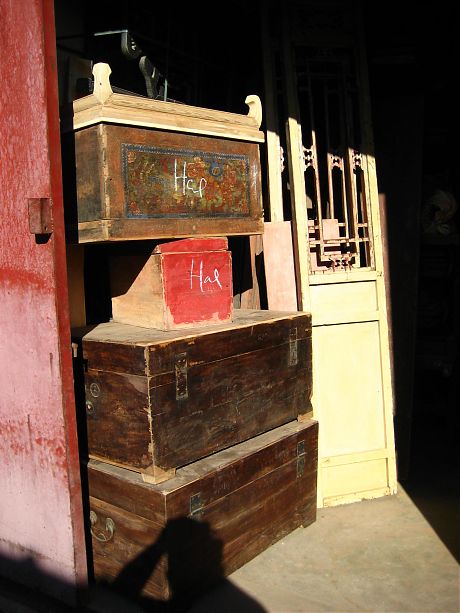
The top piece on the stack above is a hand painted poplar trunk from Qinghai province, which is north and east of Tibet. The area is mostly populated by nomadic peoples and their influence can be seen in the imagery and color choices made by the painter. Notice that there is a stand sitting on top of the box in the rough photo. Our workers fabricate these stands to fit the individual piece.
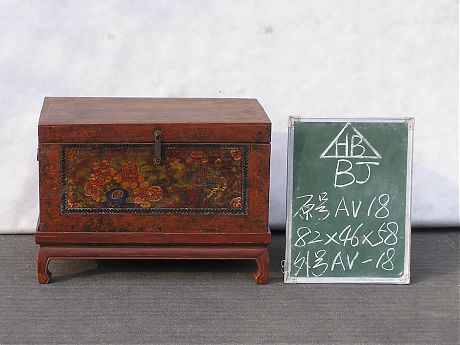
This was purchased for use as a coffee table. test
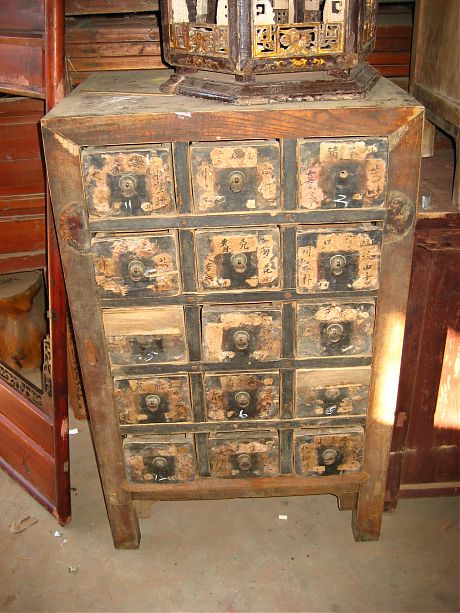
This pair of apothecary chests were in pretty rough shape, but became very handsome little pieces, with a coating of lacquer and a great deal of TLC. Many people use them for jewelry chests, as each drawer is divided into 3 discrete sections.
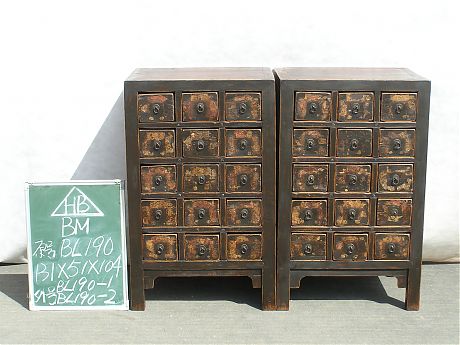
Here are 4 Mongolian grain chests before cleaning and modification. Most of them open from the top initially, but our workers carefully fashion the front panels into doors, so that these lovely, colorful chests are now functional as well as beautiful. Below are 2 of the pieces after restoration.
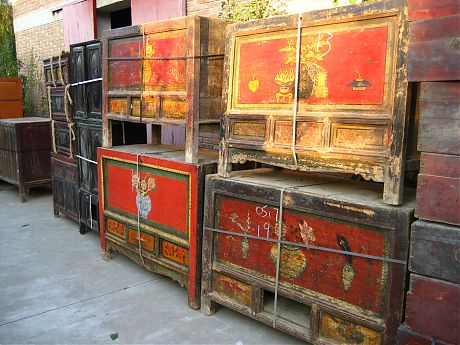
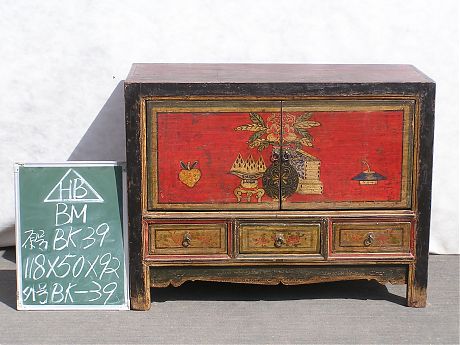
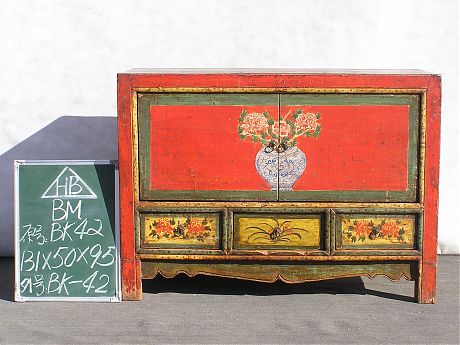
Red wedding cabinets are among the most recognizable and most reproduced of all Chinese cabinets. A wedding cabinet was a traditional gift to the family of the bridegroom when a woman married. Pictured is a 4 door wedding cabinet from Zhejiang. Our customers often use them as entertainment centers or to hold books or clothes.
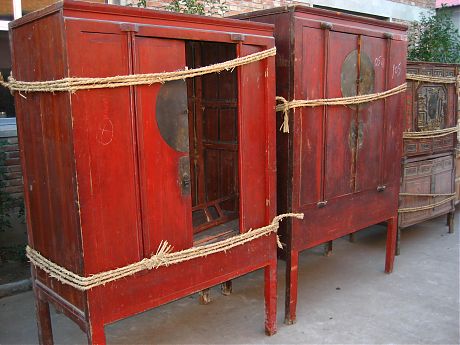
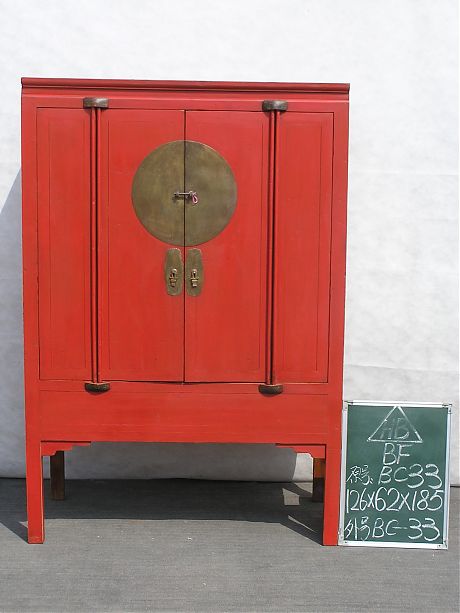
Below is one of my favorite cabinets of all time—-this is a gorgeous piece, made of china fir in Anhui Province. The cabinets that come from Anhui are especially pretty, often decorated with a muted palate of greens, blues and peachy pinks. They also have very beautiful carved details. As you can see there is not much difference between the rough and the finished products. It is a sort of cage cabinet, used in the kitchen for fresh food above and live chickens in the “coop” below.
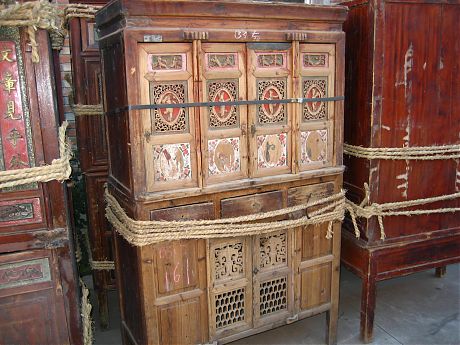
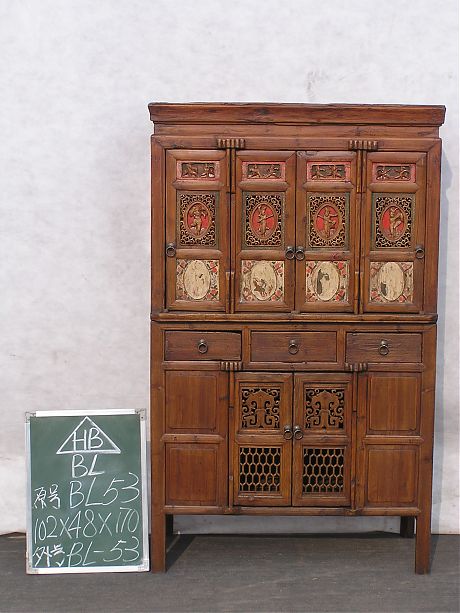
This is another sort of cage cabinet, from Zhejiang.
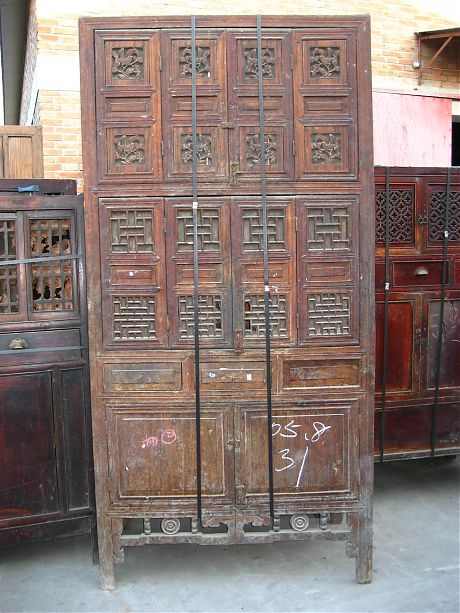
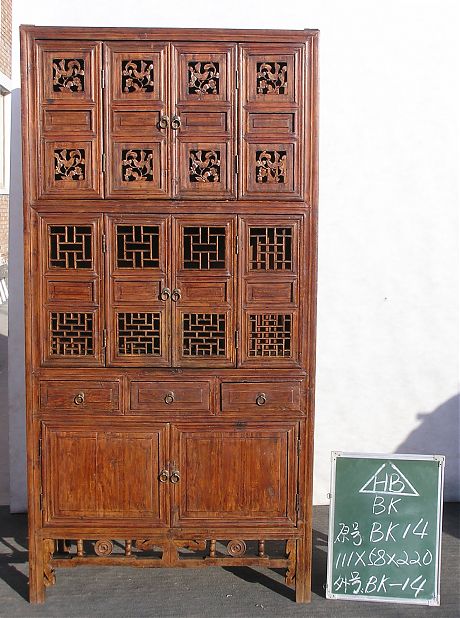
Yet another variation on the cage front cabinet comes from Shandong Province. They tend to be very heavy, almost masculine pieces, and we often are lucky to find them in these sort of “retro” colored finishes.
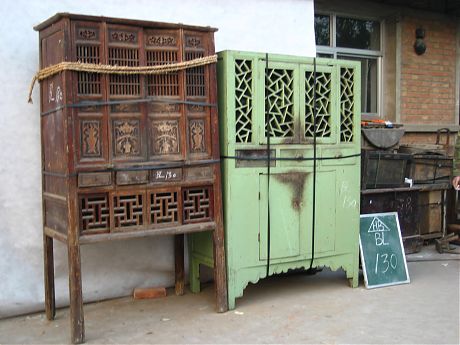
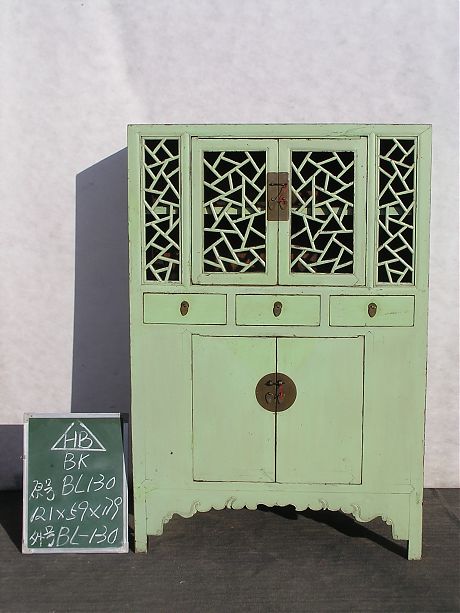
This old grain chest was not even modified, just cleaned and coated with clear lacquer. It looks virtuallly the same now as when we found it.
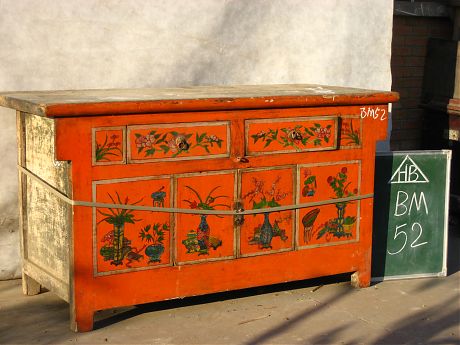
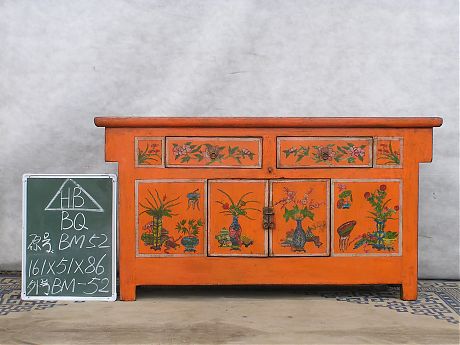
These are some of the hand tools used by our workers on an everyday basis—-
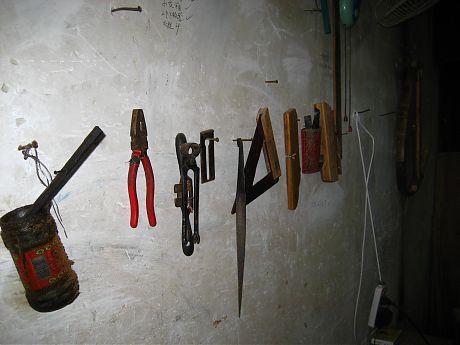
I have been told by someone who is familiar with these items that among them are calipers, a square and a “spoke shave” which is a smaller version of a “draw knife”, used to do fine trimming. Hmmmmm…………..
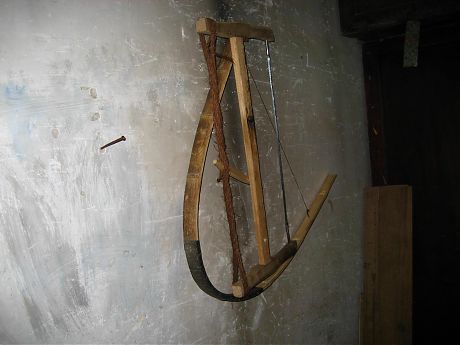
Above is a bowed handsaw, used for doing fine line cutting, such as dovetails.

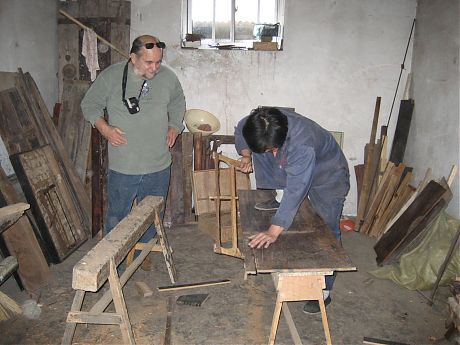
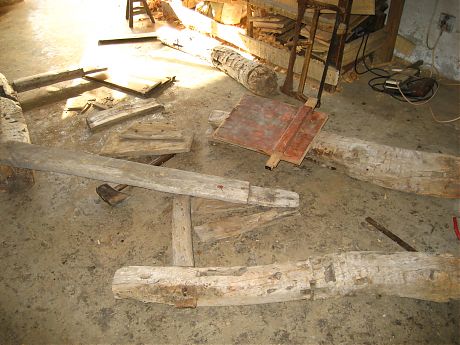
Far to the right on the floor is the only power tool our workers ever use—-a drill, which is used to take old wedges out of the mortise and tenon joints, so that they can be checked for damage and repaired if need be.
